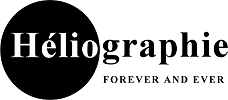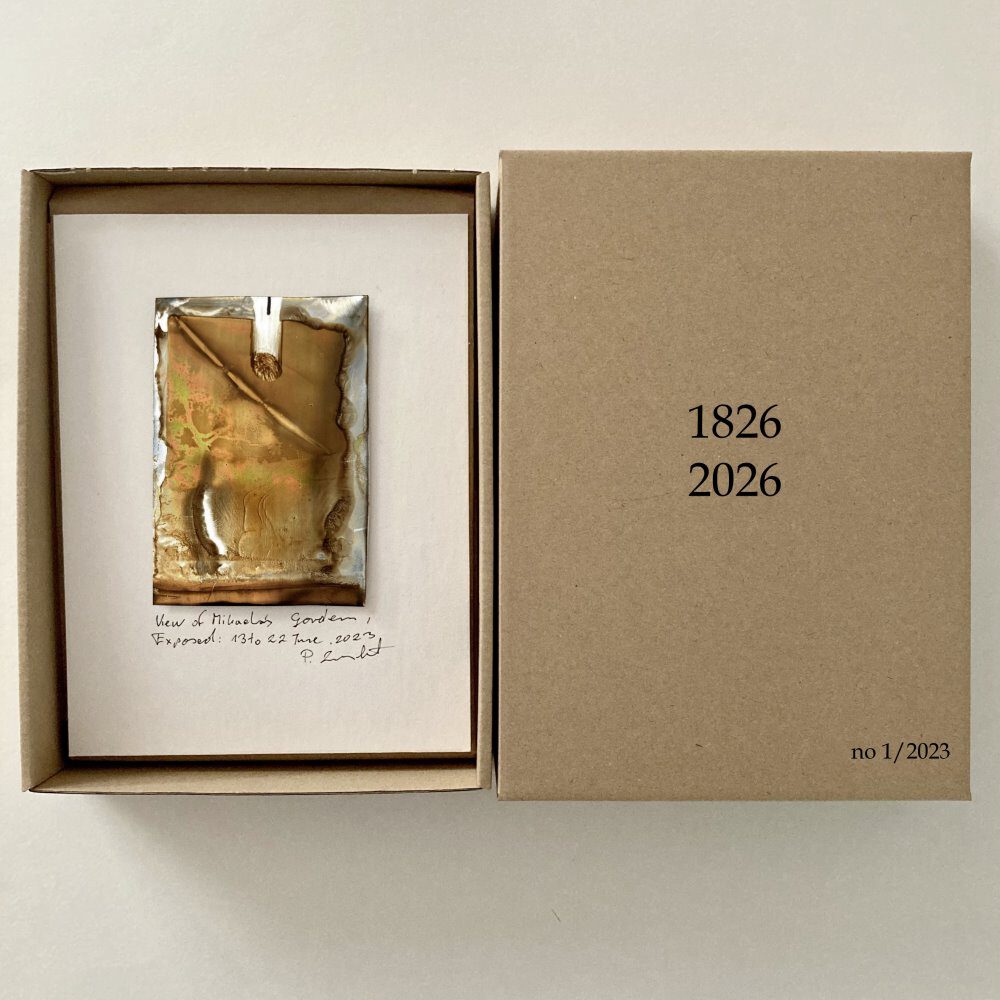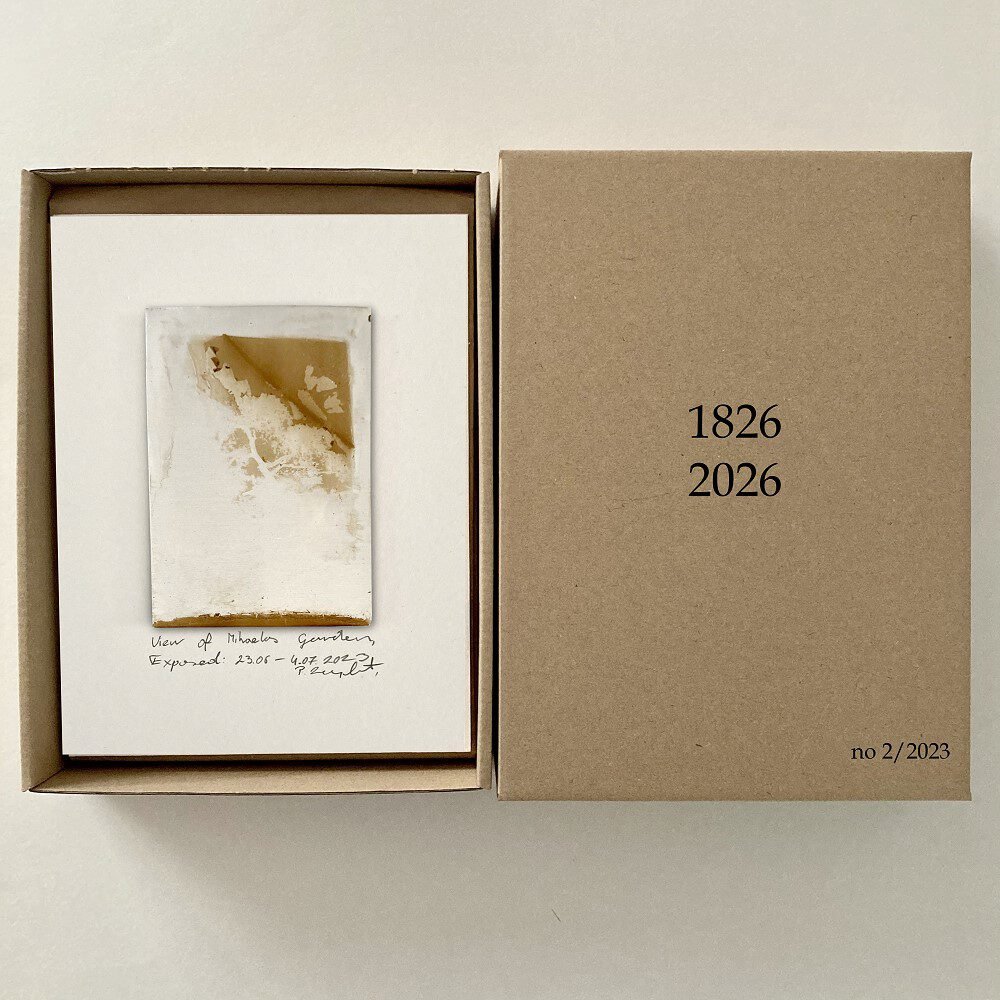Heliography Project 1827-2027
View from the Window at Le Gras
Uniques: Heliographs– „drawn with the sun“ – that I expose in the summer in Mihela’s garden with a Camera Obscura onto tin plates coated with asphalt emulsion. The exposure times vary from several days to a month.In late summer 1827, Joseph Nicéphore Niépce held the oldest surviving photograph in the world: “Point de vue du Gras.” The view from the window of his studio in Le Gras (Saint-Loup-de-Varennes, France) was captured on a tin plate coated with natural asphalt – a delicate, barely visible image that transcended transience. Using a camera obscura and exposure times of several days, Niépce created a revolutionary work that marked the beginning of photography. He called it heliography – “drawn with the sun” – making the fleeting tangible, preserved on metal.
This quiet triumph over time was a turning point in human history. Heliography laid the foundation for an art form that is now ubiquitous, demonstrating that light and shadow could be captured not just fleetingly, but permanently.
To mark the 200th anniversary of this groundbreaking moment in 2027, I have created an exclusive series of heliographs – a tribute to Niépce’s visionary work. Inspired by his technique, I expose unique images in the summer in my wife Mihaela’s garden, a place that underscores the connection to nature and the originality of the process.
Exposure times range from several days to a month, and each image is a surprise: an unparalleled interplay of light, shadow, and time, capturing the essence of heliography.


